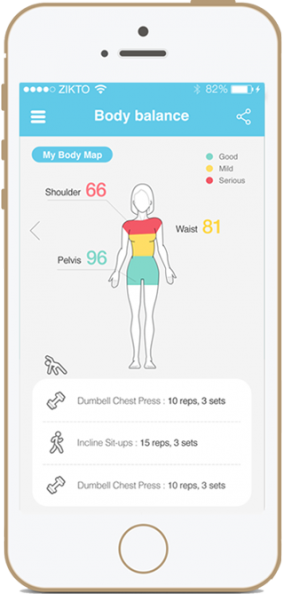Pedometers have gained some serious traction in wearable fitness trackers. Users strive to hit 8,000 to 10,000 steps per day for optimal health benefits. But with all these steps comes the hidden risk that the extensive walking may hurt more than it helps. The Zikto Walk is designed to navigate that risk.
The Zikto Walk is a wearable device that tracks a hefty 7,200 data points per minute in order to track just how well its wearer is walking, and if there's room for improvement to help take a load off the user's back, neck, knees or anywhere else. Built with several interchangeable straps, the device is designed to look as good as it works, and can connect to a smartphone directly to deliver its analysis. It can even keep track of other forms of activity, as well as calories burned, sleeping patterns, and several other standard fitness measures.
Zikto Walk is filling a very necessary demand; 80 percent of the population reportedly experiences some kind of back or neck pain. A condition called “text neck” is contributing heavily, with every inch of forward head tilt reportedly doubling pressure on the spine. Throw in changes in exercise habits, and an overall aging population that takes some hits in the posture front, and it's easy to see where back pain could be on the rise.
What's interesting here is that the Zikto Walk can reportedly identify several different types of “improper” walking, from hunched walking to “dog walking” to even “phone walking.” It makes its analysis based on a proprietary technology known as Body Balance Analysis to determine the position of the shoulders, waist and other points, and relay how those positions should be changed.
The claims the Zikto Walk makes are rational enough; the connection between body posture and certain aches and pains has been established often enough over the years. If the Zikto Walk can, as claimed, identify key points of posture and make suggestions accordingly, it should at least reduce those aches and pains connected with poor posture. Though there may be more involved than just bad posture, so there may be a need for more qualified medical examination. Using the device, however, may be the toughest part; it was unpleasant enough for many to grow up with various well-meaning adults chiding about poor posture; paying for a device to do the same thing relentlessly may be a taller order than suspected.
Still, for those with those posture-related aches and pains, some constant chiding may be just what's necessary to straighten out the various alignments in the body, and produce some more welcome, pain-free times in the process.
Edited by
Kyle Piscioniere





